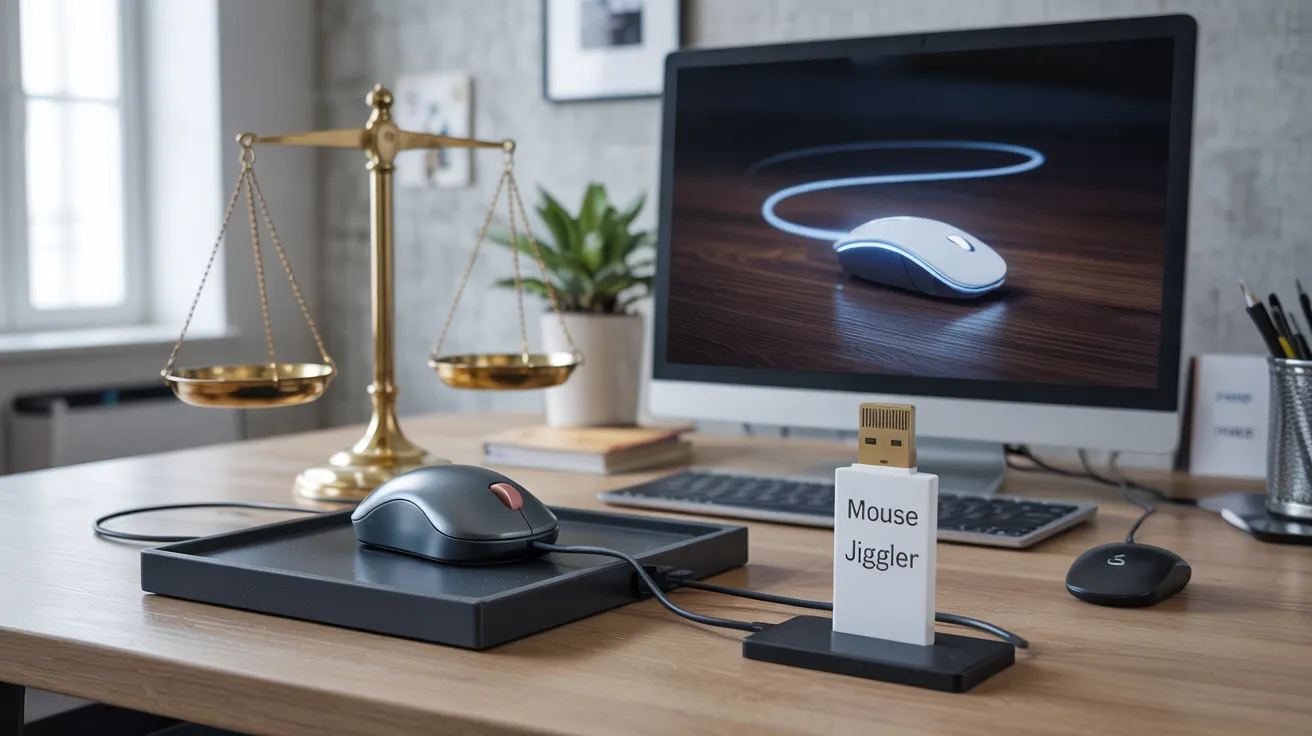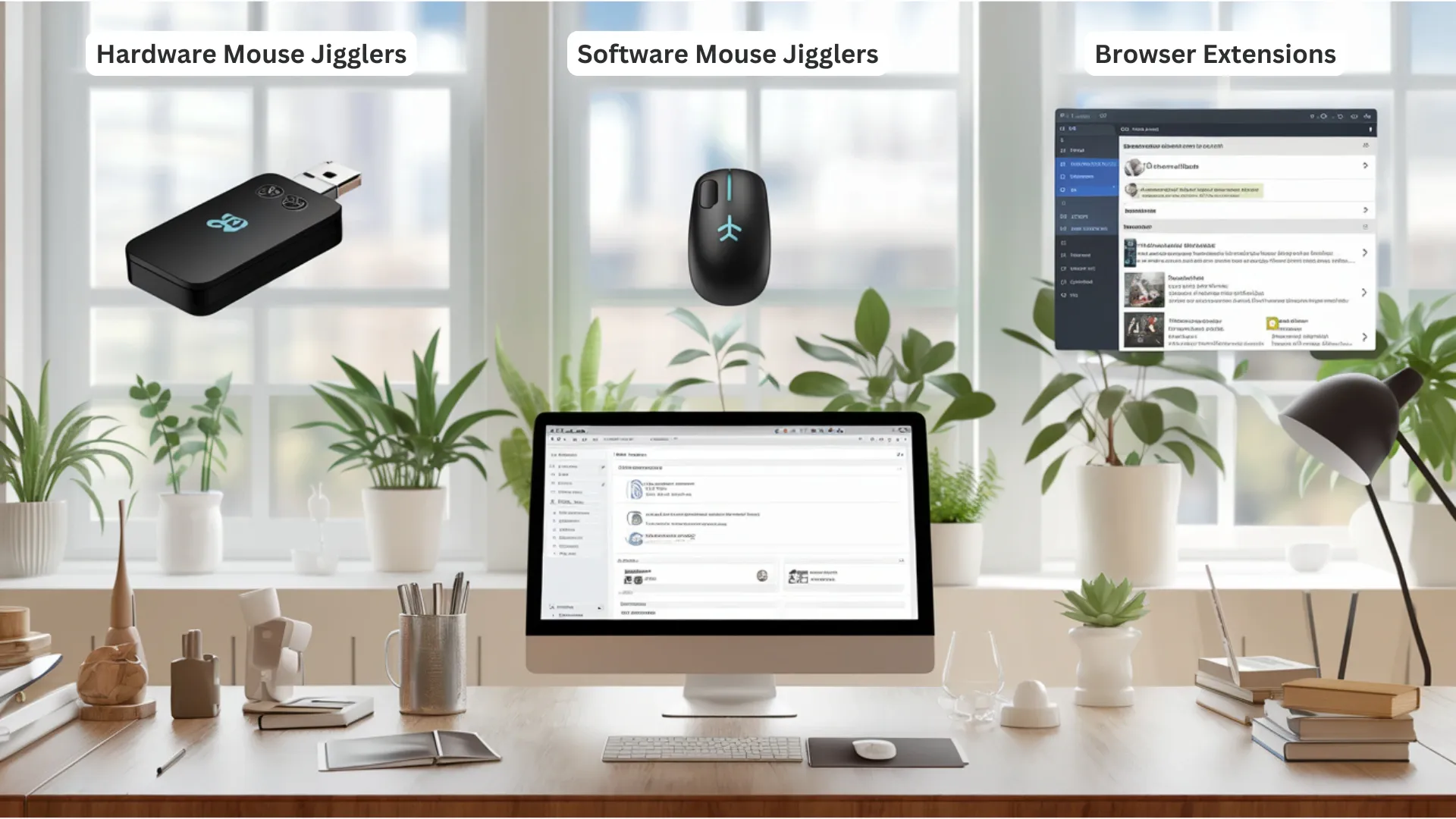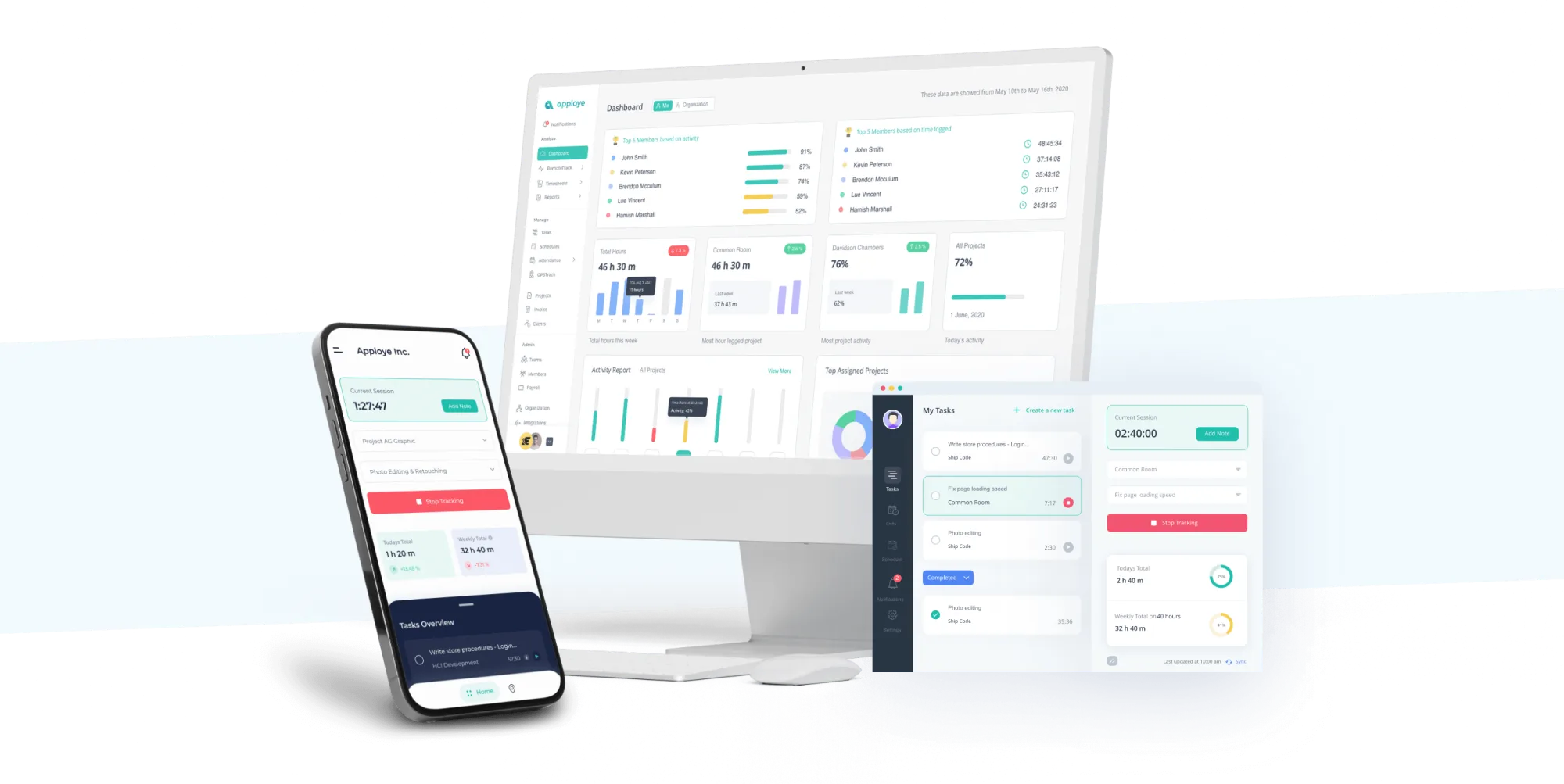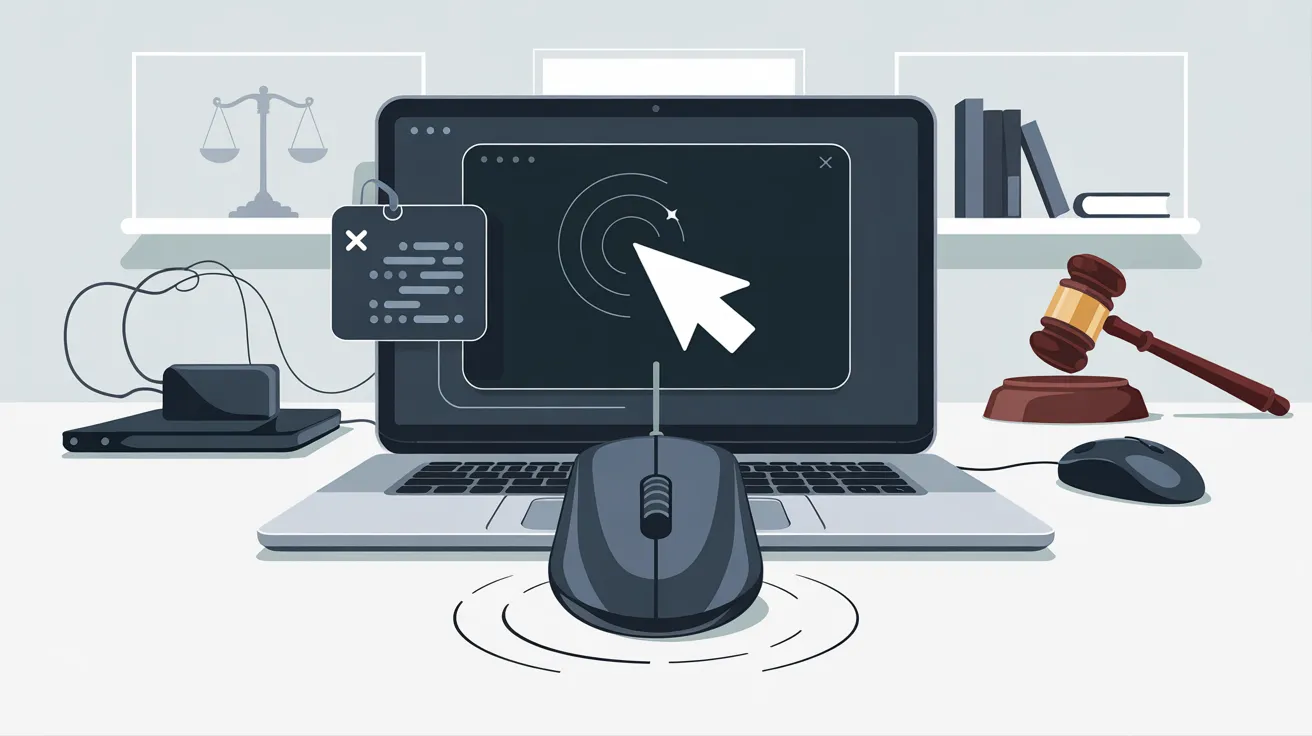What is a Mouse Jiggler? [Type, How It Works, & Legal Facts]

Key Summary
-
Mouse jigglers are devices or software that automatically move the cursor to prevent inactivity alerts.
-
Mainly, remote workers use mouse jigglers to appear active on monitoring systems.
-
Employers see mouse jigglers as a way to deceive productivity tracking tools. It often leads to trust issues and potential security risks.
As more companies use computer monitoring software to track work activity, many remote workers have started using mouse jigglers to appear active.
But what is a mouse jiggler, and how does it help?
A mouse jiggler is a small device or software that moves your mouse automatically. It helps you stay “active” on these tracking systems, even if you’re not at your desk for a moment.
It may seem harmless, but it often raises an ethical question. Employers become worried about whether their employees are actually working or just ticking the box.
Hence, in this article, I will go in-depth into:
- What is a mouse jiggler, and what do they do?
- Types of mouse jigglers
- Why do people use mouse jigglers?
- Mouse jigglers vs. employee monitoring software
- Are mouse jigglers ethical?
- Alternative solutions to mouse jigglers
What is a Mouse Jiggler?
A mouse jiggler is a small device or software that moves your mouse automatically. This keeps your screen awake and stops inactivity alerts.
But what is a mouse jiggler used for?
People use these mouse movers for different reasons. Some use it while reading long reports, watching videos, or brainstorming complex tasks.
Mouse jigglers became popular when more people started working from home. Often, Remote workers use them so their computers don’t go into sleep mode.
If you’re researching, reading, or waiting for a task to finish, keeping your computer awake may seem harmless. But some employees use it unethically to show their productivity, raising ethical questions.
Many remote desktop monitoring platforms track user activity metrics to evaluate performance, which has led to the rising popularity of mouse jiggling among remote workers.
And it’s not just office workers who use them. Gamers rely on mouse jigglers to avoid getting kicked out of online matches, and IT professionals use them to prevent security timeouts during long processes.
Even Amazon sells them for under $10, and some models claim to be undetectable.
So, are mouse jigglers helpful or sneaky?
It depends on how you use them. If they help you stay active while doing real work, they’re just another tool. But if they’re used to cheating the system, they can create trust issues between employees and employers.
Types of Mouse Jigglers

The category has a few different types of devices and software:
1. Hardware Mouse Jigglers
Hardware mouse movers are small devices that plug into your computer’s USB port. Once connected, it shifts slightly or may use a spinning disc or tiny vibrations to create cursor movements.
There are two types of hardware jigglers:
Plug & Play Jigglers:
These work like a regular mouse and move the cursor every few seconds. Some let you choose between tiny, barely noticeable movements and larger, random ones.
Mechanical Jigglers:
These don’t connect to your computer. Instead, you place your mouse on a moving platform that tricks the sensor into thinking it’s in use.
2. Software Mouse Jigglers
Software mouse jigglers are programs that run in the background and move the cursor. Some mouse mover apps can even click or scroll. While other software jigglers can even stop moving when you’re working and start again when you walk away.
3. Browser Extensions
A browser extension is a small add-on that moves your cursor or scrolls web pages to keep you online. They are easy to use, but they only work inside your browser. If you need to stay active in other apps, this won’t help.
Why Do People Use Mouse Jigglers?
There are many reasons why people use mouse jigglers. Some of them are:
Remote Work & Employee Monitoring

According to a recent survey, 18% of UK employees admitted to keeping unnecessary applications or websites open to appear busy. While 11% admitted to using mouse jigglers to simulate activity.
The rise of productivity-monitoring software has created an environment where employees feel pressured to constantly demonstrate activity, leading many to seek workarounds.
Remote workers often use a mouse jiggler to make sure their employers know they are active during working time.
It’s a common practice where employers to use remote employee monitoring software. The software indicates a lower user activity level if you aren’t active for a long time.
Sometimes, you’re focused on tasks like debugging code or reading long documents, and you might not click much.
However, that doesn’t mean you’re not working. A mouse jiggler can keep your status active while you focus on these important tasks.
However, advanced monitoring tools now track keyboard usage patterns alongside mouse movements. So, it’s harder for employees to use simple mouse jigglers effectively.
But it’s important to use a mouse jiggler responsibly. If you use it to make it look like you’re working when you’re not, that’s not legal. The best reason to use a mouse jiggler is to avoid idle time during long meetings or while downloading big files.
Also Read:
How to Monitor Employees Working from Home?
Hybrid Work & Productivity Pressure
In a hybrid work environment, employees enjoy the flexibility of working from different locations.
But they often need to constantly prove they’re working. Many companies use different time-tracking tools to see if employees are online, responding quickly, or working.
These may create unnecessary stress and push employees to focus on looking busy rather than getting real work done.
Also, using screen time monitoring solutions has further complicated the relationship between employers and employees in hybrid work arrangements.
When employers focus on such metrics, employees might feel forced to find ways to look productive. So they start using mouse jigglers instead of setting the work done.
In this situation, the only focus becomes how active an employee was the entire time. This can be frustrating for employees whose work is not being appreciated.
Similar Read:
Hybrid Work Attendance Monitoring: Here’s What You Need to Know
Work-Life Balance & Micromanagement
A survey by Raconteur and Attest found that over 80% of workers believe their employers monitor them too much. When companies focus on excessive surveillance instead of support, employees feel pressured to prove they are working.
This creates a work culture where people focus more on being seen than being productive.
Employers who excessively monitor computer mouse movement may inadvertently build an atmosphere of distrust rather than encouraging genuine productivity.
Work-life balance is another issue. Remote and hybrid workers often feel pressure to stay online constantly. Many fear that stepping away for even a few minutes will make them look lazy.
Instead of tracking every second, companies should focus on the quality of work they deliver.
The debate over employee monitoring is also a legal issue. In the U.S., different states have different rules about how much an employer can track their workers.
Some states have strong privacy laws, while others allow companies more freedom to monitor employee activity.
Creating an environment of mutual accountability eliminates the need for invasive monitoring, and employees stop using mouse jigglers.
Further Read:
Employee Monitoring Laws Explained
How are Mouse Jigglers and Employee Monitoring Software Connected?
Companies are always looking for ways to track productivity, so they use screen monitoring software. These softwares increase employee accountability.
But did you know these tools can also detect when someone uses a mouse jiggler?
If you’re an employer, you might be wondering if an employee is faking activity. Here’s how they are connected:
1. Screen Recording and Screenshots
The best employee monitoring tools, like Apploye, take random screenshots throughout the day. This way, employers can check whether employees are genuinely working or just keeping their computers active.
2. Time Tracking and App Usage

If an employee shows activity during work hours but isn’t using any work-related apps or websites, they may be using a mouse jiggler.
You can use a time tracker with screenshots to check how much time employees spend on specific apps. So you can monitor if they're focusing on the right tasks.
#1 Time Tracker for Your Team
Try free for 10 Days - No credit card required!
3. Network Monitoring
Some mouse mover devices are plugged into USB ports. Network monitoring tools can detect any unusual data transfers that might suggest a device is connected.
4. Physical Inspections
In some cases, the best way to spot a mouse jiggler is by physically checking the workstation. Employers can inspect USB ports for unknown devices or use scanning tools to find unauthorized hardware.
Similar Read:
20 Best Employee Time Tracking Apps & Software
Are Mouse Jigglers Ethical? (Debate and Legal Considerations)

Employers increasingly rely on monitoring systems as more people tend to work remotely. These tools help ensure productivity and transparency, but they also create pressure on the employees. That’s why the rise of mouse jigglers is also increasing.
But are mouse jigglers ethical? And what are the legal implications of using them? Let’s get into a bit more detail.
For Employees:
Flexibility & Micromanagement
Some employees use mouse jigglers only to avoid unnecessary micromanagement. As the employee monitoring tools track every mouse click and move, it can feel as though you’re under a microscope.
A mouse jiggler helps to bypass this pressure by keeping your computer active. It is quite helpful when you need a little break or are focused on tasks that don't involve constant movement.
This harmless use of mouse jigglers is worth considering.
For Employers:
Illusion of Productivity and Trust Issues
On the flip side, when an employee uses a mouse jiggler, their computer appears active, but they may be doing something completely unrelated to work. It can be deceiving for employers who rely on these systems to track their remote teams’ progress.
By using this unethically, the employee is hindering their productivity. If workers know they can deceive the system, they may start slacking off more.
Trust and Honesty at Risk
Employers expect transparency from their employees. However, if they use such devices, mutual trust decreases. Not only that, it also creates dishonesty in the workplace.
Security Risks
Many of these devices are used by a USB drive or software installed on a computer. So they can easily introduce malware or leak any sensitive company data.
Another major issue arises when mouse jigglers prevent a computer from locking after a period of inactivity.
Legal and Ethical Considerations
Mouse jigglers often violate company policies.
Most companies have clear guidelines on acceptable computer use, and using a device like this often breaks those rules.
Employees who use mouse jigglers may face disciplinary actions, ranging from warnings to termination.
Alternative Solutions to Mouse Jigglers
There is no alternative solution to mouse jigglers other than building transparency, ethical productivity tracking, and flexibility:
Better Work Transparency
One of the key reasons why people use mouse jigglers is that employers prioritize employee activity over outcomes. Employers don’t need to monitor each movement. Instead, they should be clear about what’s expected, how progress is tracked, and what success looks like.
When employers focus on outcomes, employees don't feel pressure to constantly prove them. So they can focus on their work and it helps create a transparent workplace.
Ethical Productivity Tracking
Ethical employee productivity means tracking only what matters the most. It focuses on what you bring to the table at the end of the day. This way, employees feel more trusted and less micromanaged.
They get the space to do the job well without the constant pressure of being watched. Ethical productivity helps businesses stay on track while respecting employees' boundaries.
Flexibility in Hybrid Work
Instead of forcing people to stay at their desks, why not give employees the freedom to manage their time?
Flexible work policies also help combat burnout. When employees feel they have control over their schedules, they’re more likely to be engaged, energized, and motivated.
Conclusion
To sum up, mouse jigglers reveal a deeper issue—how we define productivity and trust at work. While they can prevent idle time alerts, overuse raises ethical and security concerns.
Instead of relying on quick fixes, focus on open communication, outcome-based tracking, and respectful monitoring. When employees feel trusted and supported, they stay genuinely engaged.
The goal is to create a work culture where real progress matters more than constant clicks.
FAQs
1. How does a mouse jiggler work?
A physical mouse jiggler is a small USB device that moves the mouse cursor. A mouse mover software is a program that makes the mouse move in the background so the computer thinks someone is using it.
2. Is using a mouse jiggler ethical?
There are no laws that say using a mouse jiggler at work is legal. However, it is considered dishonest and usually goes against workplace rules. Using these devices can hinder employee performance and cause problems in a team.
3. Can employers detect the use of a mouse jiggler?
Yes, employers can find out if you use a mouse jiggler. They may have software that looks for strange or repetitive computer mouse movements. It can also check for unknown devices or unusual activity on your computer.
4. Can using a mouse jiggler violate employee monitoring laws?
Using a mouse jiggler is not illegal by itself. However, it can break company rules and employee monitoring laws. If you use it to avoid tracking or make it look like you are working when you are not, you could get in trouble.
5. Is it legal for employers to monitor work computers?
The Electronic Communications Privacy Act (ECPA)Electronic Communications Privacy Act (ECPA) and the Stored Communications Act are important laws that control how companies can monitor electronic activities on their devices. These laws allow employers to watch everything employees do on company computers, even if they are working from home.

